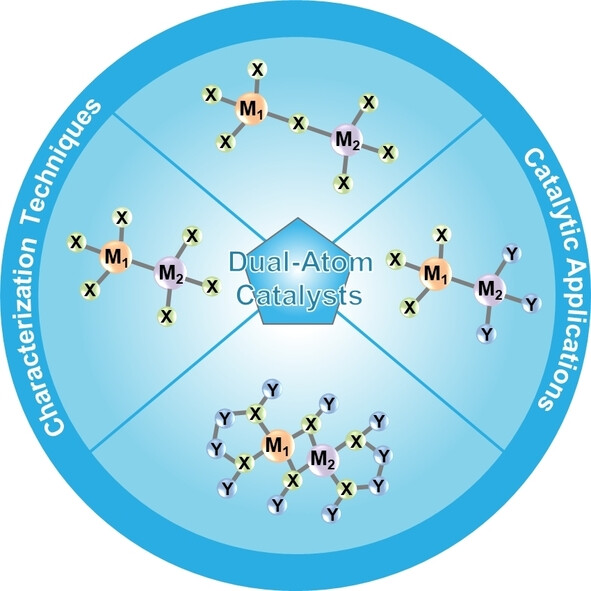Abstract
Atomically dispersed metal atoms on supports exhibit distinctive advantages in maximizing atomic utilization, which plays an indispensable role in the fabrication of cost-effective catalysts. In particular, dual-atom catalysts (DACs) containing dual active sites not only retain the merits of single-atom catalysts (SACs), but also introduce diverse interactions between the two adjacent metal atoms, endowing them with superior catalytic performance and a broad range of applications. With the development of DACs, it is important to identify active sites and establish intrinsic catalytic mechanisms relationship. The general characterization methods for DACs are comprehensively summarized here, especially the structural nature of dual active sites is discussed in detail. Subsequently, the representative scientific research efforts in various applications including thermocatalysis, electrocatalysis, and photocatalysis are described, with emphasis on structure-property relationships. Finally, a summary and some prospects for the future of advanced DACs are presented.

Keywords Plus:PHOTOCATALYTIC CO2 REDUCTION,METAL-ORGANIC FRAMEWORKS,SCALING RELATIONSHIP,SINGLE,SITES,CARBON,DEHYDROGENATION,HYDROGENATION,OXIDATION,PLATINUM
Published in CHEMCATCHEM;10.1002/cctc.202400854


